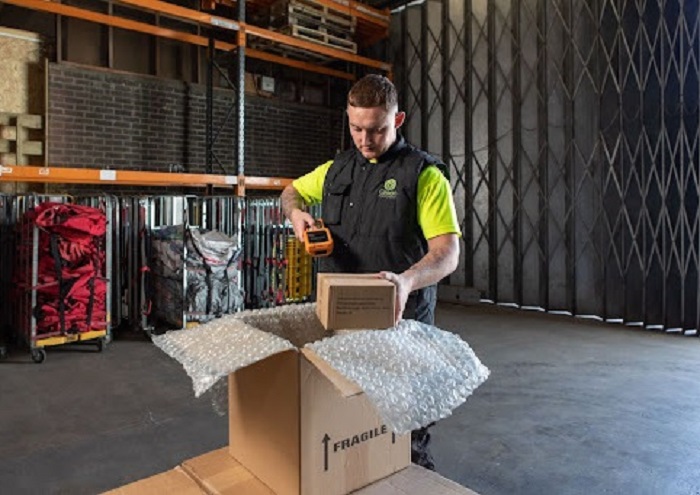Omnichannel fulfilment has become table stakes for UK eCommerce businesses. But while most companies have invested in unified inventory systems and multi-channel order management, few have addressed the environmental impact of their fulfilment operations.
Recent data shows that logistics accounts for approximately 8% of global greenhouse gas emissions, with packaging waste adding billions of tonnes to landfills annually.
As consumer demand for sustainable shopping grows and regulatory pressure mounts, retailers need omnichannel strategies that take into account operational efficiency as well as environmental responsibility.
This requires rethinking three core areas: supply chain visibility, packaging innovation, and returns management. Together, these pillars can reduce emissions and maintain the speed and flexibility modern customers expect.
Why Standard Omnichannel Falls Short on Sustainability
Most omnichannel order fulfilment strategies focus exclusively on speed, cost, and customer experience. They prioritise real-time inventory visibility and order routing to the nearest fulfilment node, but rarely incorporate carbon data into these decisions.
Current omnichannel best practices include:
- Centralised order management systems (OMS) that route orders across channels
- Unified inventory visibility across warehouses, stores, and drop-ship partners
- Flexible fulfilment options (home delivery, click-and-collect, ship-from-store)
- Integrated returns processing across all channels
These capabilities improve efficiency, but they miss a critical opportunity. The same systems that route orders based on cost and speed can also consider environmental impact, but not a lot of companies have built this into their technology stack.
Supply Chain Visibility That Includes Carbon Data
Real-time visibility is essential for omnichannel operations. However, most systems only track inventory levels, order status, and delivery estimates. Adding sustainability metrics to this data layer enables smarter decisions at almost every stage of order fulfilment.
What to Track Beyond Traditional Metrics
Forward-thinking retailers now monitor:
- Carbon emissions per order (gCO₂e) based on transport mode and distance
- Packaging weight and material composition per SKU
- Percentage of recycled or recyclable materials used
- Return rates by product category and fulfilment method
- First-delivery success rates (failed deliveries multiply transport emissions)
This data should flow through the same integrated systems (WMS, OMS, ERP) that manage inventory and orders. Planners can then see stock levels, delivery times, and environmental impact in a single dashboard.
Carbon-Aware Node Selection
Many retailers route orders to the nearest warehouse to reduce delivery time and cost. This inherently reduces transport emissions by shortening distances. However, next-level, greener optimisation considers additional factors:
- Transport mode mix (electric vehicles, cargo bikes for urban areas, consolidated deliveries)
- Line-haul intensity and regional congestion patterns
- Local grid energy sources (warehouses powered by renewable energy)
By incorporating these variables, businesses can reduce emissions by 15-25% compared to cost-only routing, according to logistics research. Some retailers now expose these options to customers at checkout, offering “ship slower, ship greener” alternatives or pickup incentives that consolidate deliveries.
Packaging Innovation as a Fulfilment Strategy
Packaging represents one of the largest gaps in current omnichannel thinking. Competitors discuss inventory systems and order routing extensively, but they rarely address packaging selection, right-sizing, or material innovation.
Packaging decisions directly impact both emissions and waste. Oversized boxes increase dimensional weight charges, require more void fill, and take up more space in transport vehicles. Single-use plastics and non-recyclable materials contribute to landfill waste. Damage during transit drives return rates higher.
Working with Low-Waste Fulfilment Partners
Modern sustainable fulfilment operations prioritise packaging efficiency from the start. B Corp-certified providers like Green Fulfilment focus on low-waste packaging approaches, offering recyclable materials and right-sized options that reduce both environmental impact and shipping costs.
By selecting packaging that matches product requirements rather than defaulting to oversized boxes, businesses typically reduce packaging material use by 10-20% and cut dimensional weight charges significantly. This also lowers transport emissions by fitting more packages per vehicle.
Set Clear Packaging Standards
Set minimum standards for packaging materials:
- Minimum recycled content percentages by product category
- Curbside recyclability requirements (avoiding mixed materials that can’t be recycled)
- Plastic-free dunnage and void fill alternatives
- FSC-certified paper and cardboard sources
These policies should be embedded in procurement contracts and WMS settings, not left to individual picking decisions. When packaging selection becomes a system configuration rather than tribal knowledge, it scales reliably across all fulfilment nodes.
Reusable Packaging Pilots
Some retailers now test reusable packaging for high-repeat, short-haul routes. Customers receive orders in returnable totes or mailers, which they drop back at stores or hand to delivery drivers on their next order. Early pilots show reusables can be used 50-100 times before end-of-life, dramatically reducing per-order packaging waste.
This works particularly well for click-and-collect and subscription services where customer touchpoints are frequent and predictable.
Returns Management That Reduces Waste and Miles
Returns are both a cost centre and an environmental concern. UK retailers process approximately £27 billion in returns annually, generating substantial reverse logistics emissions and disposal waste.
Standard omnichannel practice integrates returns processing across channels, but optimisation typically focuses on speed and cost. Few companies consider the environmental impact of return routing decisions.
Intelligent Return Destination Selection
Advanced returns management uses AI to choose optimal return destinations based on:
- Regional demand (returned items can be restocked locally if there’s nearby demand)
- Refurbishment requirements and local repair capabilities
- Resale likelihood and markdown timing
- Shipping cost and distance
Adding carbon weighting to these decisions means sometimes a returned item should stay in-region for local resale rather than shipping back to a central warehouse, even if the latter is slightly cheaper.
For low-value items with high return shipping costs, some retailers now offer “keep it or donate it” options, which eliminates reverse logistics emissions entirely while maintaining customer satisfaction.
Consolidated and Label-Less Returns
Return consolidation through lockers, partner stores, or scheduled pickups reduces transport emissions compared to individual return shipments. Some retailers have eliminated return boxes and labels entirely, using QR codes and reusable packaging that customers drop at designated locations.
This approach works particularly well in urban areas with dense pickup networks. Early adopters report 30-40% reductions in return transport emissions while also improving customer convenience.
Root Cause Analysis to Reduce Return Rates
The greenest return is the one that never happens. Feeding return reason codes (wrong size, damage, incorrect item, doesn’t match description) back into product development and packaging improvements reduces future returns.
If a particular SKU shows high damage-in-transit rates, improve protective packaging. If sizing issues drive returns, enhance product descriptions and size guides. This closed-loop feedback turns returns data into operational improvements.

Putting It All Together: A Practical Framework
Achieving long-term success requires sustainable fulfilment with coordination across systems and teams:
- Data foundation: Integrate carbon and packaging metrics into existing OMS/WMS platforms alongside traditional inventory and order data
- Node selection logic: Extend routing algorithms to weigh cost, speed, and emissions when assigning orders to fulfilment locations
- Packaging automation: Configure right-sizing rules and material standards within warehouse systems, removing guesswork from picking operations
- Returns intelligence: Use AI to route returns based on demand, cost, and carbon impact; offer keep/donate alternatives for low-value items
- Customer communication: Expose sustainability options at checkout (greener shipping, pickup incentives) and provide post-purchase carbon reporting
Measuring Success
Track these KPIs to monitor progress:
- Grams of CO₂ equivalent per order (gCO₂e/order)
- Grams of packaging per order
- Percentage of right-sized packages (minimal void space)
- Percentage of recycled or recyclable materials used
- Return rate by channel and category
- Percentage of returns consolidated or processed locally
- First-delivery success rate
Establish baseline measurements and set quarterly improvement targets. Many retailers find that greener operations also reduce costs through lower packaging material spend, decreased dimensional weight charges, and fewer repeat delivery attempts.
There is a Business Case for Greener Omnichannel
These metrics matter because environmental initiatives aren’t charity work. Research shows that 54% of UK consumers now expect eco-friendly delivery options, and 37% will pay more for sustainable shipping. Regulatory pressure is also increasing, with extended producer responsibility schemes and packaging taxes affecting more categories.
Retailers who integrate sustainability into their omnichannel fulfilment operations today gain a competitive advantage and future-proof against regulatory change. The technology and processes required (WMS configuration, data integration, AI routing) are extensions of existing systems rather than wholesale replacements.
Starting with one pillar (perhaps packaging innovation or carbon-aware routing) allows businesses to build capability incrementally whilst demonstrating ROI before broader rollout.
The path to greener omnichannel fulfilment runs through the same operational systems retailers already use. The question isn’t whether to pursue it, but how quickly to move.







